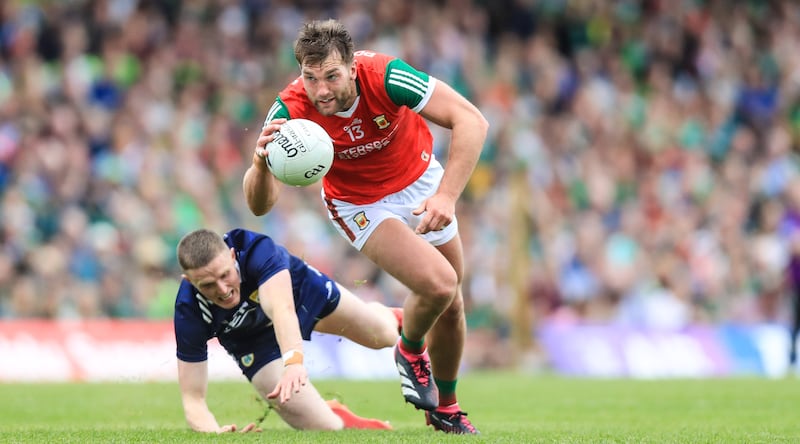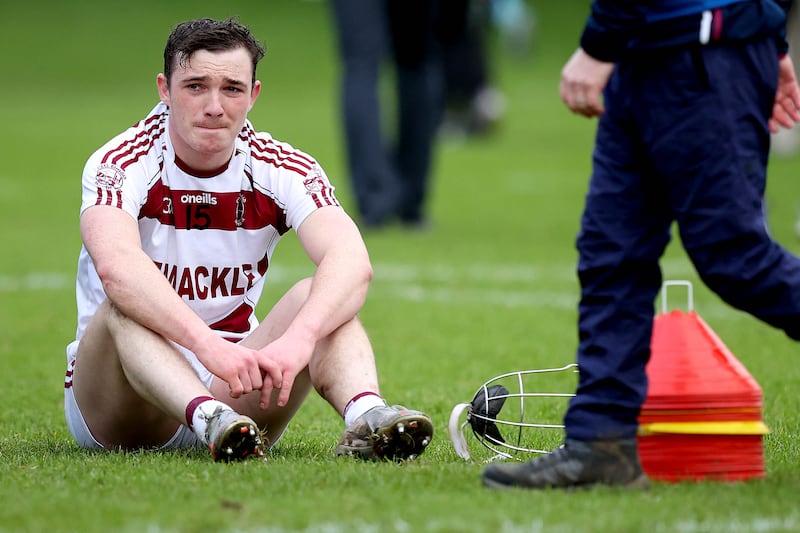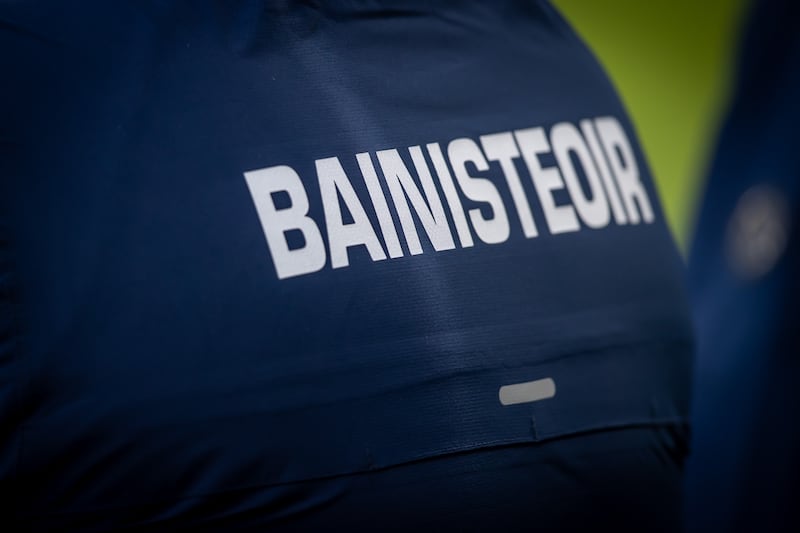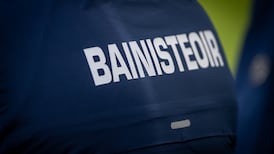Having suffered an early Connacht championship exit, all eyes were on Mayo last Saturday in Killarney to see how they would respond. It didn’t take long to get our answer.
From the first minute until the last they were really switched on. When the final whistle went, the thought struck me that we could be looking at the team with the best athletic profile in the country – they have size, speed, power and agility, all built upon a serious aerobic base.
On an afternoon when they entered the back yard of the All-Ireland champions and left with a decisive victory, having become the first team since 1995 to beat Kerry in a championship match at Fitzgerald Stadium, their opening score summed up Mayo’s blueprint.
Just four minutes in, Seán O’Shea was turned over in the middle of the field and the visitors immediately set off on a blistering transitional attack, with strong running and rapid interplay involving Jordan Flynn, Matthew Ruane and eventually James Carr, who forced a fine save from Shane Ryan. But Ryan O’Donoghue pounced on the rebound and popped over Mayo’s first score. The speed at which they carved Kerry open was hugely impressive.
Final frontier is the itch that remains to be scratched for Slaughtneil
Ciarán Murphy: One last year of togging out awaits, but I’ve caught the coaching bug
GAA ramps up efforts to tackle ‘unsustainable’ team costs with new licence motion
Tipperary’s Colin O’Riordan makes history as new Sydney Swans AFLW senior coach
Mayo’s confidence is probably their biggest asset. Different managers have come and gone, but the same mentality has remained and it allows them to play on the front foot against any opposition. It empowers them to kick the ball and go toe-to-toe in man-to-man situations all over the pitch.
Much of this is based on a belief system. Quarter of an hour in, Ryan moved out from the Kerry goal to collect a free. He then carried possession forward to the middle of the field, unchallenged, with Mayo players instead concentrating on their men – there were five man-to-man situations inside their defensive 45. And no safety net.
Paudie Clifford sought to take advantage and made an incision, but immediately three Mayo players – including Aidan O’Shea – released from their man and swallowed up the Kerry forward, turned him over and won a free. Just 31 seconds later, Pádraig O’Hora fisted the ball over the Kerry crossbar, as Paul Geaney tried and failed to keep pace with the hard-running Mayo defender. It was another example of their brilliant transitional football.
That snapshot encapsulates the dynamic nature of how they can play the game, it’s an example of Mayo’s biggest strength but also possibly their biggest weakness. They can be absolutely devastating in full flight, but they always give you chances. For me that point goes to the heart of why Mayo have been such an enigma over the last 10-15 years.
It’s a risk-reward system, one that facilitates an awful lot of open passages of play. With this man-to-man approach, what Mayo are really saying is: “We’re as good as you, we’re not afraid of you, we are going to take you on and let’s see who is left standing.”
There is no better analogy than boxing, it’s the best man and the last man standing. That’s the way Mayo approach much of their football.

Their game plan is akin to Kerry and Dublin’s at their best. The only thing that has differentiated those three teams in recent history has been Mayo’s lack of a marquee forward. At times, Kerry and Dublin have had a couple in their ranks at the same time. It makes you wonder how many All-Irelands Mayo could have secured by now had they even one?
They still do not have that marquee forward, but in O’Shea they certainly have a player that gives their forward line a strong focal point.
One particular phase of play, which I think might be crucial to Mayo’s ambitions this summer, was evident just before the half-hour mark. Kerry had 15 men defending, but rather than slowing the play down Ruane brought real directness and burst through the defensive lines. He beat four players before slipping the ball to Carr, who kicked a really good point.
We have known for many years now that Mayo can kick the ball and run it, but finding a way to unpick 15-man defensive structures has been a problem. If they have solved that puzzle now too, it will allow them to keep the scoreboard ticking over in big matches.
They also showed bravery with kick-outs last weekend. Midway through the first half there was a strong press of seven Mayo players against five Kerry defenders, which forced Ryan to go long. And that is what Mayo wanted him to do, they wanted to force a 50-50. Seán O’Shea plucked the ball from the sky in that instance, but it still demonstrated Mayo’s willingness to take risks in a bid to force the game.
That all ties in with their physical profile – because once the ball goes long they are confident they have the speed and power to compete in those battles.
Kevin McStay’s side have a lot of tools at their disposal, a kicking game, a running game, and the capacity to go man-to-man with any opposition. But it is their physical profile which possibly gives them an advantage over all their rivals.
If Mayo are to do the unthinkable this year, retaining the blueprint they laid down in Killarney is going to be central to that journey. They genuinely carry a scoring threat from all over the pitch and the hope within the dressingroom must be that the sum of their parts combines to negate the lack of that marquee forward.
However, as always with Mayo, the story is not about one stand-alone game. We have seen plenty of these epic performances over the years. We already know they have the capacity to match up and beat the best in the country.
Are they good enough is not the question. The question is about consistency. Have they got the capacity to repeat the trick four or five times in a row? We’ll soon find out.

















